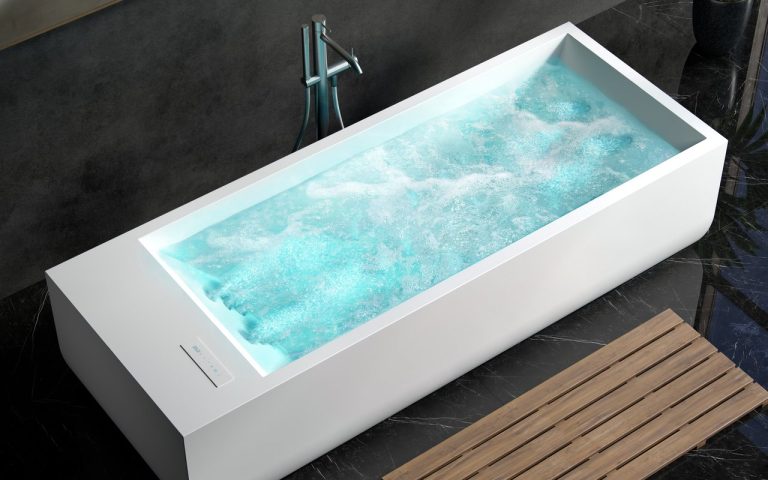In the ever-changing landscape of home design and renovation, one trend has been steadily gaining traction: the incorporation of walk-in therapy tubs. These innovative fixtures are transforming bathrooms from mere functional spaces into personal wellness retreats, offering a blend of accessibility, safety, and therapeutic benefits that appeal to homeowners of all ages.
Walk-in therapy tubs represent a significant shift in how we view the role of bathing in our daily lives. No longer just a means of getting clean, these specialized tubs offer a sanctuary for relaxation, pain relief, and improved mobility. As our population ages and more people seek ways to age in place, walk-in therapy tubs have become a crucial element in creating homes that cater to long-term comfort and accessibility.
The rise of walk-in therapy tubs is part of a broader trend towards creating more adaptable living spaces. Homeowners are increasingly looking for features that will allow them to remain in their homes as they age, rather than having to relocate to assisted living facilities. These tubs, with their low thresholds and built-in seating, make bathing safer and more comfortable for those with limited mobility, while still offering a stylish addition to any bathroom.
But the appeal of walk-in therapy tubs extends beyond the senior demographic. Younger homeowners are also recognizing the value of these fixtures, particularly those dealing with chronic pain, sports injuries, or high-stress lifestyles. The hydrotherapy features often included in these tubs—such as air jets, whirlpool systems, and targeted massage functions—provide a way to unwind and recuperate without leaving the comfort of home.
One of the key advantages of walk-in therapy tubs is their versatility in design. Manufacturers have recognized that these tubs need to fit seamlessly into a variety of bathroom styles, from traditional to ultra-modern. As a result, there’s now a wide range of options available, from sleek, minimalist models to more ornate designs that can serve as a bathroom’s focal point.
Installation of a walk-in therapy tub is often less disruptive than homeowners might expect. Many models are designed to fit into the space of a standard bathtub, minimizing the need for extensive bathroom renovations. This makes them an attractive option for those looking to update their homes without undertaking a full-scale remodel.
The technology behind walk-in therapy tubs continues to advance, with new features being introduced regularly. Some models now include chromotherapy lighting, aromatherapy systems, and even built-in sound systems, turning a simple bath into a multi-sensory experience. Heated seating and rapid drain systems address common concerns about comfort and practicality, making these tubs even more user-friendly.
Energy efficiency is another factor driving the popularity of walk-in therapy tubs. Many models are designed with insulation that helps maintain water temperature, reducing the need for constant reheating. This not only saves on energy costs but also allows for longer, more comfortable bathing sessions.
The health benefits associated with walk-in therapy tubs are significant. Regular hydrotherapy can help alleviate symptoms of arthritis, fibromyalgia, and other chronic pain conditions. The warmth and buoyancy of the water can improve circulation, reduce inflammation, and promote better sleep. For those recovering from injuries or surgeries, these tubs can provide a safe environment for gentle exercise and rehabilitation.
Safety features are a paramount concern in the design of walk-in therapy tubs. Non-slip flooring, grab bars, and easy-to-reach controls are standard in most models. The low entry threshold significantly reduces the risk of falls, a major concern for older adults and those with mobility issues. Some tubs even include quick-release doors and rapid drain systems for added peace of mind.
As the popularity of walk-in therapy tubs grows, so does the market for complementary products and services. Companies now offer specialized bath products designed to enhance the therapeutic effects of these tubs, such as mineral salts, essential oils, and bath pillows. Professional installation services have also become more readily available, ensuring that these complex systems are properly integrated into existing plumbing and electrical systems.
The integration of smart home technology is the next frontier for walk-in therapy tubs. Voice-activated controls, smartphone apps for customizing bath settings, and integration with home health monitoring systems are all on the horizon. These advancements promise to make walk-in therapy tubs an even more integral part of a connected, wellness-focused home environment.
While the initial cost of a walk-in therapy tub can be substantial, many homeowners view it as an investment in their long-term health and independence. Some insurance plans and government programs offer assistance for the installation of these tubs, recognizing their potential to reduce healthcare costs and improve quality of life for individuals with certain health conditions.
As we continue to redefine what it means to create a comfortable, functional home, walk-in therapy tubs stand out as a prime example of how thoughtful design can address multiple needs simultaneously. They offer safety, therapeutic benefits, and a touch of luxury, all while adapting to changing physical needs and lifestyle preferences.
The growing popularity of walk-in therapy tubs reflects a broader shift in how we approach home design and personal wellness. As our homes increasingly become multi-functional spaces that cater to all aspects of our lives, features like these tubs that blend practicality with comfort and health benefits are likely to become even more prevalent. For many, a walk-in therapy tub is more than just a bathroom fixture—it’s a gateway to a more comfortable, accessible, and health-conscious way of living.

